
How a Madrid-born, London-trained fashion designer is bringing new life to classic American menswear.
July 13 2012 4:00 AM EST
By continuing to use our site, you agree to our Privacy Policy and Terms of Use.

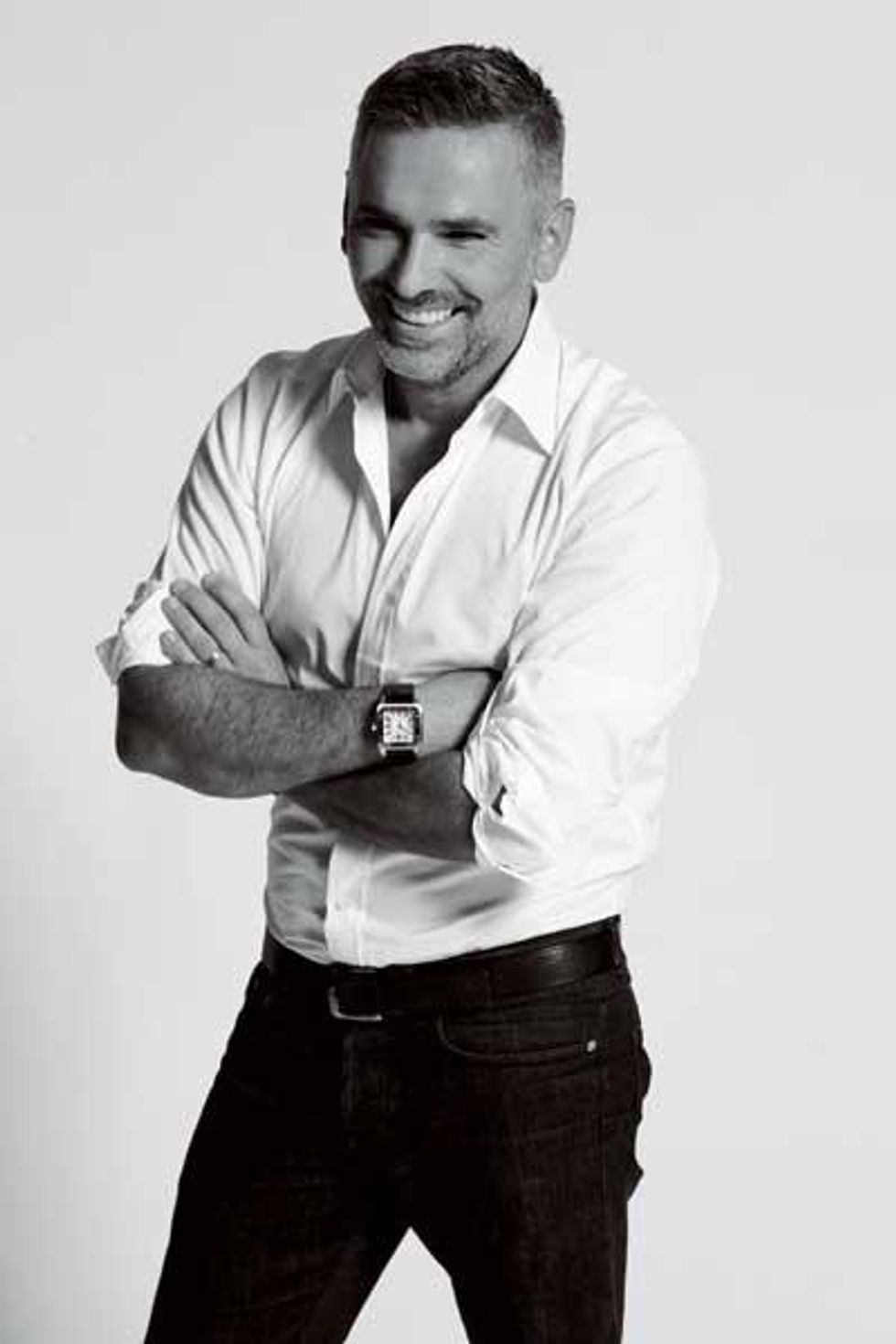
Though he's based in New York City, Rojo, creative director for menswear label Joseph Abboud, has long had his eye on Hollywood. For Joseph Abboud's fall 2012 line, Rojo focused on the 1930s and on the kind of style coincidentally exemplified by the onetime residents (Errol Flynn, Howard Hughes, later Frank Sinatra) of his preferred hotel.
"Particularly on the West Coast, there was a Hollywood glamour," he says in his thick Spanish accent, in a deep voice just low enough to invite one to lean in. "That period, particularly in men's fashion, was so elegant, so I wondered why it was forgotten."
Featuring big lapels and strong, square shoulders, the designs of that era are more suited to American tastes than are the super-slim suits from many contemporary European designers. Rojo updated the '30s sensibility with modern twists, including moving the armholes higher and softening the shoulders.
Joseph Abboud began as its founder's namesake line in the 1980s and has always taken pride in being thoroughly American, with all the clothing produced domestically. But Rojo draws distinctions between his American sensibility--on display with deconstructed shapes in earth tones, soft blues and grays--and the red, white, and blue of another notable fashion house.
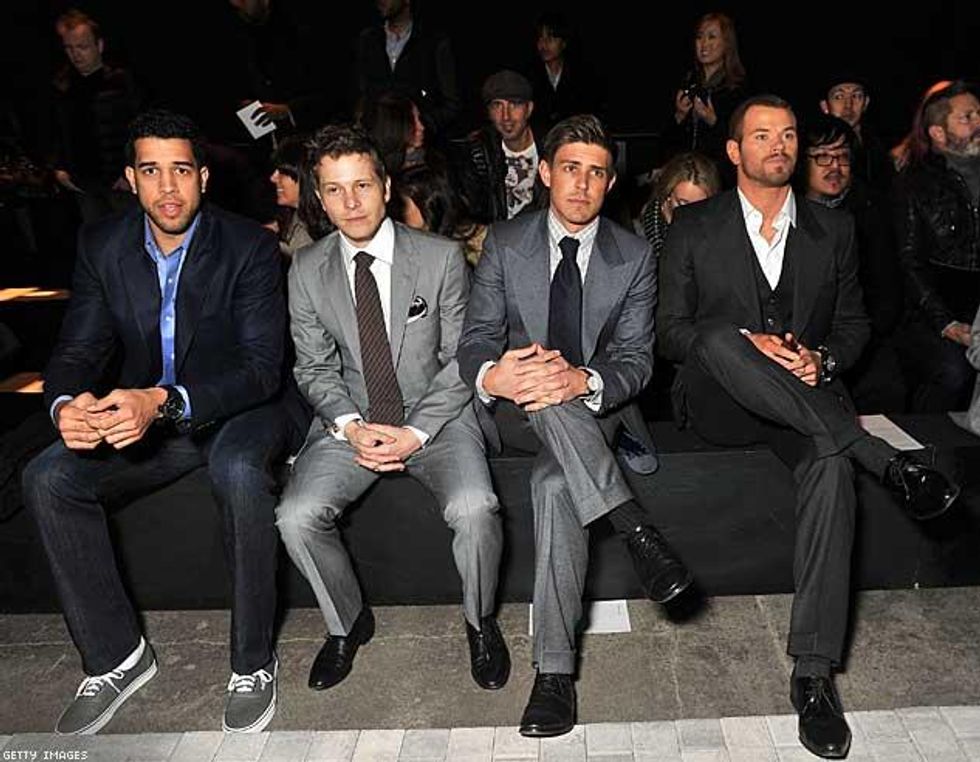
(Left to right) Landry Fields of the New York Knicks, actors Matt Czuchry, Chris Lowell, and Kellan Lutz attend the Joseph Abboud Fall 2012 fashion show during Mercedes-Benz Fashion Week at Hudson River Park's Pier 57 on February 9, 2012 in New York City.
"Ralph Lauren does it in a very British way, and I do it in an American way," he says of the line that conveys a refined get-down-to-work attitude, "which is maintaining comfort and functionality."
Since becoming creative director two years ago, Rojo has been redefining a label that, once known for classic design and luxurious fabrics, was in danger of being relegated to memory. There's a tightrope walk required of the person designing for a brand well known to longtime and devoted customers, while simultaneously trying to reach new audiences, but according to observers, Rojo has been managing it deftly. He has refreshed the silhouettes of suit jackets and pants, and the brand, which now includes scarves, bags, and shoes, has a new cohesion. This year he brought Joseph Abboud back to the runway for the first time in seven years.
"He's bringing more of a design edge," says John Jones, fashion director of menswear trade publication MR Magazine. "There are a lot of stores and a lot of guys who liked Joseph Abboud all along and will continue to, but Rojo is opening it up a bit more and is certainly offering something for that guy who is looking for something special."
Rojo's own interest in fashion and design started in his childhood in Madrid, at age 6 or 7.
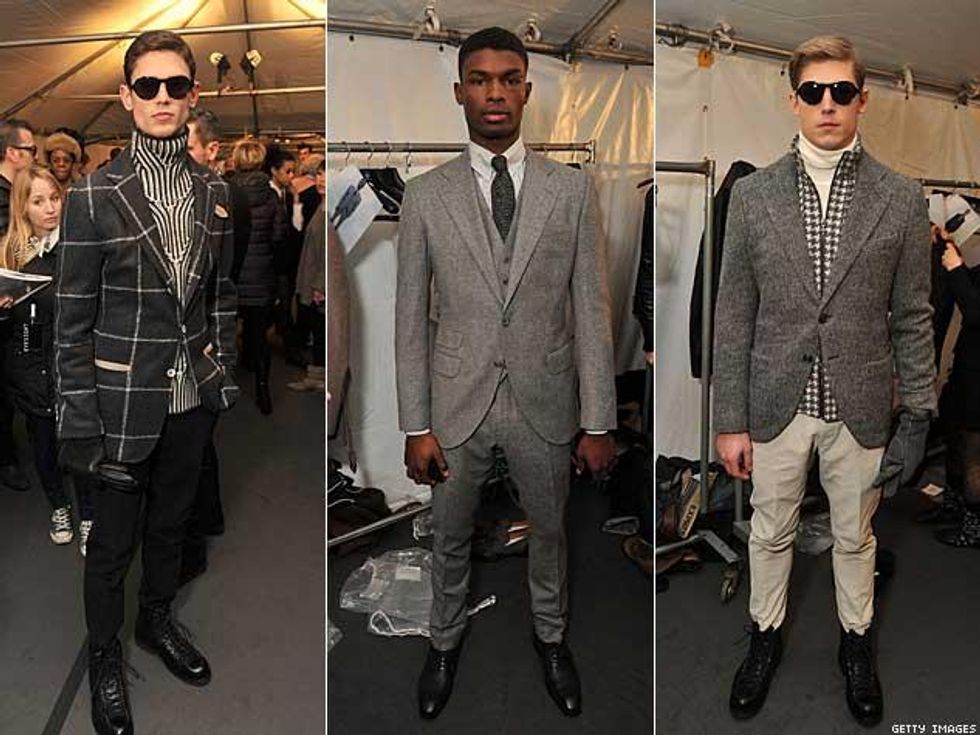
Backstage at the Joseph Abboud Fall 2012 fashion show.
"I always loved seeing my mom and dad getting dressed. They would go out always on Wednesday nights, to the theater or to the movies," he says. "My parents' style was very classic. They are a Spanish family, conservative in a way. My father always wore a tie and a pocket square, my mother always wore heels, and she never, ever went out of the house without makeup. I was fascinated to see how dapper they looked dressed up."
As a boy he devoted more attention to his action figures' clothes than their weaponry and had an eye for the latest fashions and designs.
"Even as a kid I felt I had to dress up," he says. "Probably it was a part of being gay without knowing you are gay, but having the inclination. Always, since a kid, I had an eye for what people wore."
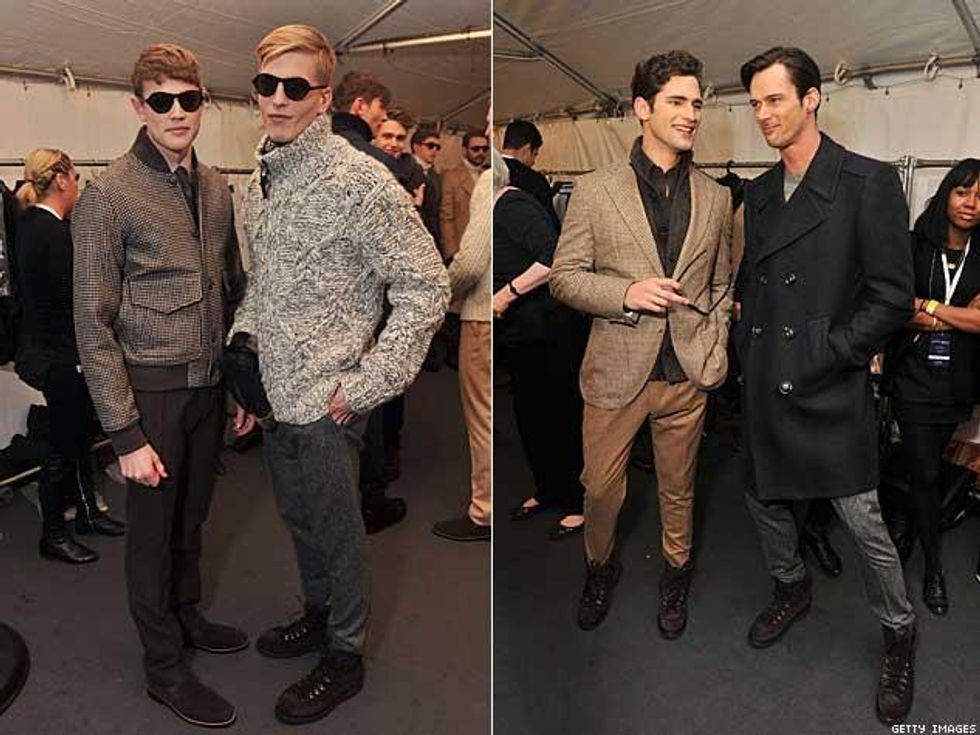
Backstage at the Joseph Abboud Fall 2012 fashion show.
Rojo went to design school in Madrid, and about the time he came out, he began to toy with dressing in punk styles, wearing his hair in a Mohawk, and emulating Morrissey and Robert Smith of the Cure.
"As you get older, you start to develop your own style, but experimenting with different looks was so much fun," he says. In Madrid the obscure nightclubs he preferred were in the neighborhoods frequented by "the prostitutes, the gays, and the drug dealers," he says with a laugh. The best were the clubs with the most interesting and eclectic crowds. "If everyone looked alike, I wouldn't go."
After design school he lived in London for nine years, and for six of those he worked for Dunhill, where he designed tailored clothing and refined his skills.
"As a master tailor you need to breathe Savile Row," he says. "You need to work with the masters there. You need to know the rules to be able to break them."
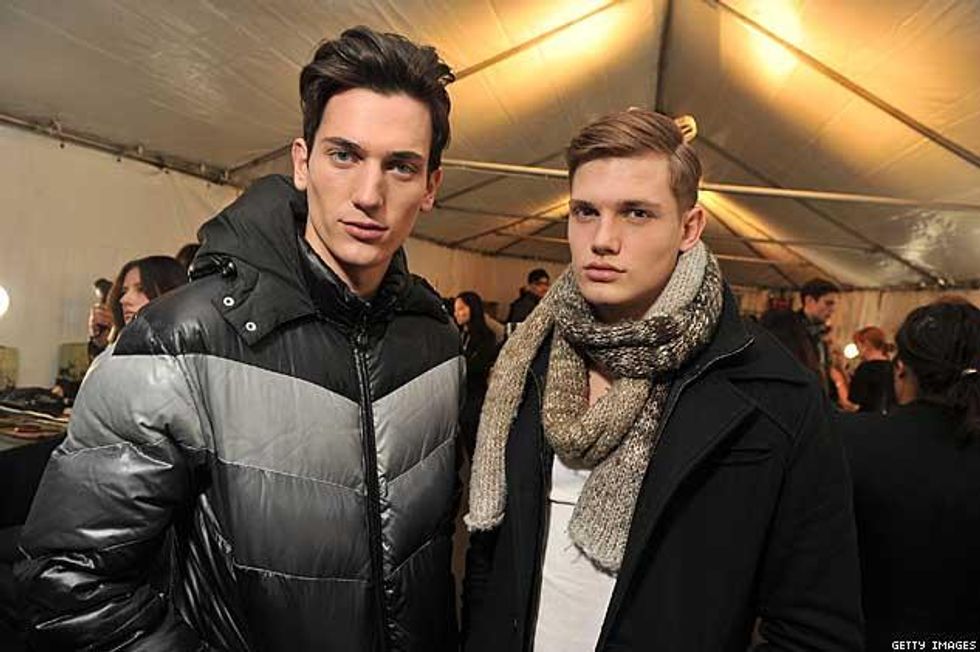
Backstage at the Joseph Abboud Fall 2012 fashion show.
Though Savile Row tailored clothes cost the arm and leg they are cut to clothe, Joseph Abboud aims for a more affordable price point, many suits costing $600-$700.
"[London] really gave me the ability and knowledge to translate that kind of luxury into much more reasonable price," he says. Though a classically tailored suit is meant to endure, there's nothing static about Rojo's designs for the future of Joseph Abboud. "I don't try to maintain the collection I started, it will continue to evolve. Every season, every year, whenever it's needed."
Rojo moved to the United States in 1999 and now lives in Manhattan with David Goldenberg, his partner of nine years. He travels to Los Angeles frequently but laments that the big-screen elegance isn't a daily reality.
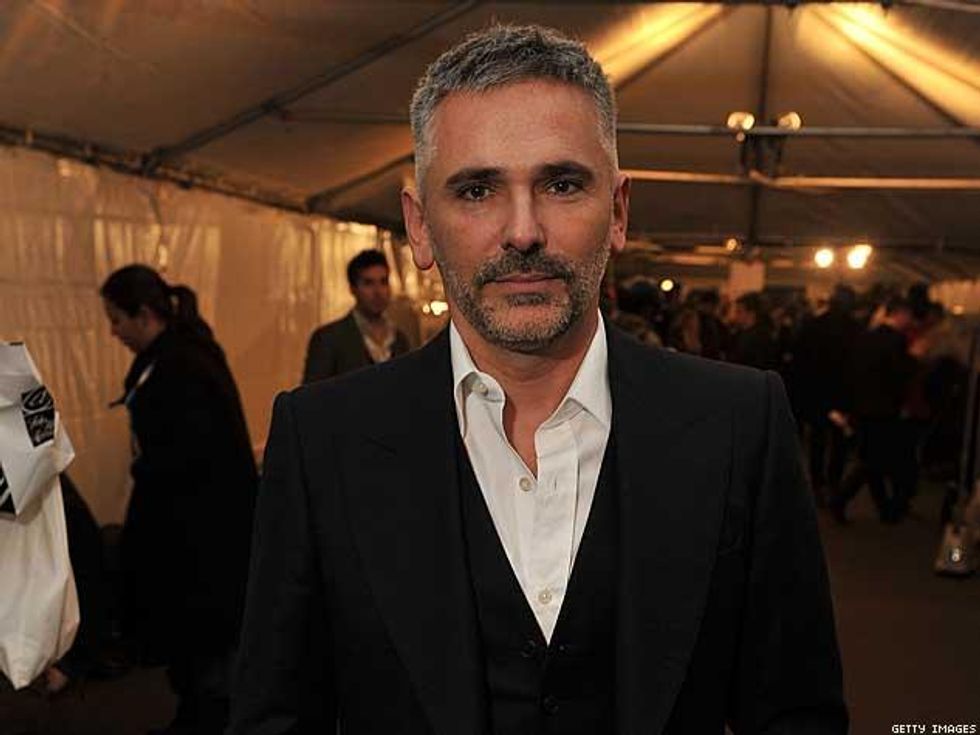
Bernardo Rojo backstage at the Joseph Abboud Fall 2012 fashion show.
"I see all these young actors and they are beautiful people, but some of them look like they just rolled out of bed," he says. "They try to look messy. I don't really understand it. Even if you are going for a coffee wearing jogging pants, you should try put them on in a way that looks decent--not for anybody you might bump into, but just for yourself."
Quick to dismiss notions that the multibillion-dollar fashion industry is at all frivolous, he also evangelizes for the tangible effects of paying attention to one's appearance.
"Clothes are very important because they show your mood. They are a message to people, the image you want to convey," he says. And not a little of his advice is aimed at the sweat-suit set: "If you have a down day, you dress up and go of the house. You'll feel better."
Charlie Kirk DID say stoning gay people was the 'perfect law' — and these other heinous quotes